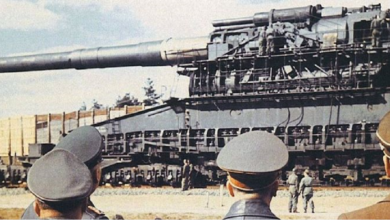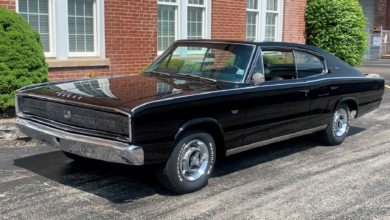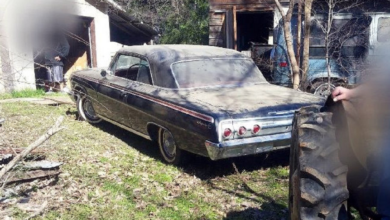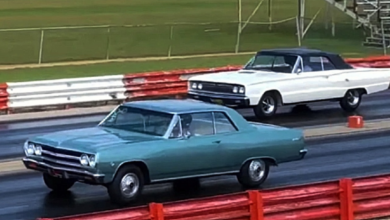A Restored Factory Plymouth Belvedere Hemi Captures Super Stock History.
There are certain historic automobiles that are highly collectible because of what they are, in terms of rarity or engineering superiority. Then there are others that are famous because of what they’ve done out in the world. It’s a 1967 Plymouth Belvedere I with Hemi power, a car that officially was never supposed to exist, and which today is a candy dish dotted with delicious “firsts” and “onlys” that will excite the most demanding collectors of American high performance. It sits as a zero-mileage car, having completed a full rotisserie restoration by a committed Mopar historian and enthusiast, and is authenticated by the pioneer who raced it.
Judy Lilly, who raced this Belvedere with factory support in 1967, is one of the first women to succeed in any genre of pro-level American motorsport. In the early 1960s, she was a sportsman racer living in Colorado and flogging a four-speed 1961 Corvette in the D/Sports Racing class. Lilly could cut a bulb to shreds and began winning rounds prolifically, culminating with a class win at the NHRA Winternationals in 1965. It was enough to land her on Chrysler’s radar as it cast about for racers to carry the Pentastar shield in Super Stock.The painstakingly restored, fully authenticated Belvedere I you see here is unique in that it was Lilly’s first Chrysler product, and her first factory-backed ride of any kind. She raced this car in NHRA Super Stock/B during 1967 before graduating to a Hemi Barracuda the following season. Lilly scored her first NHRA national event victory at the Winternationals, her first of four career Super Stock national wins, a record that also included a runner-up at the U.S. Nationals. Lilly was a major female star in drag racing, predating the rise of Shirley Muldowney in the nitro classes, and was named Super Stock driver of the year three times before retiring in 1978. Reconnecting with her first factory car, Lilly personally took part in the authentication of this Plymouth.
Technically, it’s a car Plymouth wasn’t supposed to build. Scott Smith, a renowned Mopar expert and noted restorer of carburetors, has intimate firsthand knowledge of this Belvedere. He reports that, according to Mopar lore, the arcane Chrysler specification and ordering rules that were in place during 1967 restricted super-low-line cars like the Belvedere I from being fitted with the Hemi at all. Scott said that at Plymouth, the engine was purportedly restricted to higher-line midsize offerings; in Plymouth’s case, that was the GTX. Similarly, over at Dodge, only cars like the Charger or Coronet R/T were considered Hemi-eligible.That ended when Lilly’s exploits danced across the radar screen of a Chrysler engineer named Dale Reeker, who was a leading figure in its performance program and was on a talent hunt to find drivers for its products in Super Stock. He approached Lilly at a Colorado strip and offered her a partial sponsorship, triggering Lilly to find additional funding from a Denver auto retailer named Pappy Fry. Reeker offered Lilly a Belvedere I with a Hemi for her to race, with her husband, Dennis Mauer, handling the prep. But first, the car had to be built, under Reeker’s direct supervision.
According to Scott, Reeker personally visited the Chrysler assembly plant in Saint Louis and walked this Belvedere I down the line, directing individual line workers to hold back components that needlessly added weight. These included all the factory undercoating in the wheel wells, sealant spread in the gaps between the body seams, and butyl weatherstripping to line the windshield gaskets. None of that is present on this Plymouth. Beyond that, it was delivered to Lilly with a standard flat Belvedere hood until Reeker provided what is believed to be the prototype for the steel hood scoop that later became a standard part of the lightweight RO23 Hemi-powered Belvedere II hardtop coupes (and the similar WO23 Dodge Coronet Hemi hardtop coupes) that were built in a small batch of 55 by Chrysler expressly for drag racing later in the ’67 model year. Scott says that a lot of knowledgeable Mopar historians believe the Lilly car is a de-facto prototype for the factory RO23 lightweights.Reeker also specified the expected radio and heater delete for the Belvedere I, but there was more: He directed that the half-inch-thick layer of shredded jute that Chrysler used as a sound deadener underneath the carpeting be excluded from the buildup. Ounces meant milliseconds, so if it wasn’t necessary, out it went. It was Lilly’s first race car with sponsorship of any kind, her first Chrysler product, and the only four-speed Chrysler product that she drove in a long career of racing Mopars – the Barracuda that came next, for instance, ran in SS/AA with a race-built TorqueFlite.
As Scott tells it, this car is a consequence of accounting practices that purists believe reflect the fact that Chrysler lost money on Hemi optioning even though the package retailed for more than $800. As a result, he said, its availability was restricted in 1967 to higher-profit cars. It’s generally accepted that Plymouth produced three other Belvedere I’s in 1967 with the 426 street Hemi – by this time, there was no “race” Hemi, as the engine had already been homologated for NASCAR – but unlike the Lilly car, they weren’t lightened under the supervision of a Chrysler engineer, and weren’t factory-backed race cars.The Lilly car’s VIN tells a succinct story: The “RL21” indicates a Belvedere two-door sedan; the fifth character of the VIN, “J,” designates a Hemi engine; the next digit, a “7,” shows a 1967 model year car; and the next is a “7” indicating the St. Louis assembly plant. Scott learned this encoding while collecting a series of very obscure Mopar muscle, including a 1967 Hemi Belvedere II hardtop. “Part of my hobby was discovering other cars like the one I owned,” he said. In the early 1990s, he spotted a small classified ad in the back of Hot Rod magazine showing a 1967 Belvedere sedan with a Hemi located in New Mexico, an unlikely combination that immediately got his attention. A call to the seller yielded a VIN that confirmed the Plymouth’s legitimacy.
At the time, Scott was living on the Gulf Coast of Florida and knew another Mopar collector and parts accumulator named Jim Drain, of Pinellas Park, who was a wellspring of knowledge on mid-1960s Hemi cars. Drain agreed to buy the Belvedere I, which sat for several years in his shop until he noticed something showing slightly through the thin brown paint on the car. Curiously and gently, a fraction of an inch at a time, he began rubbing the paint by hand with very fine sandpaper. Almost immediately, he uncovered Judy Lilly’s name, hand-painted on the car’s C-pillar. Both he and Scott vaguely remembered the name. Research from that point revealed the full significance of both the Plymouth and its original driver.
Drain tracked down Lilly, who still lives in Colorado, and had several long telephone chats with her. She was able to recall the color and paint scheme, and actually kept records and photos, including the VIN. More years elapsed as Drain amassed the needed parts for a proper restoration. Scott characterized him as a perfectionist, and as “a one-way black hole” when it comes to amassing rare parts, but Drain was insistent that this one-of-none Mopar was going to be done utterly right.
The heart of the project, other than the car itself, is the 426 street Hemi, built to stock Street Hemi specs with normal 10.25:1 compression and dual Carter AFB carburetion, but with a slightly warmer camshaft for some rumble. The engine, with open Hooker headers, was built by Dick Landy Industries in Los Angeles before Dick Landy, the Mopar legend and contemporary of Lilly’s, died in 2002. An era-correct Hurst competition shifter stirs the Chrysler four-speed. While having zero miles since restoration, the Plymouth is street-legal, aside from open exhaust, and will run on pump gasoline.
The interior is totally stock and original except for competition equipment, and in visibly excellent condition. The original seat facings were used because reproduction materials don’t exist. The instruments, including a Stahl tachometer, are said to be fully operable. The battery was already properly in the trunk where the factory installed it–another “one and only” factory detail. All new suspension components were installed, including reproduction Keystone wheels, a period Lilly sponsor.
Restoring the Plymouth to its correct as-raced state, Drain finished the car in two-stage Daffodil Yellow topped by stripes in Dark Copper, both correct Plymouth colors for 1967. The hand-painted markings and sponsorship lettering on the car were re-created by examining period photographs, the graphics outlined in gold leaf. Scott says the car retains its original date-coded glass, with a scratch on the windshield where its NHRA classification number was removed. The odometer reads zero. According to Scott, this car has never been exposed to water since being painted in 2009.











